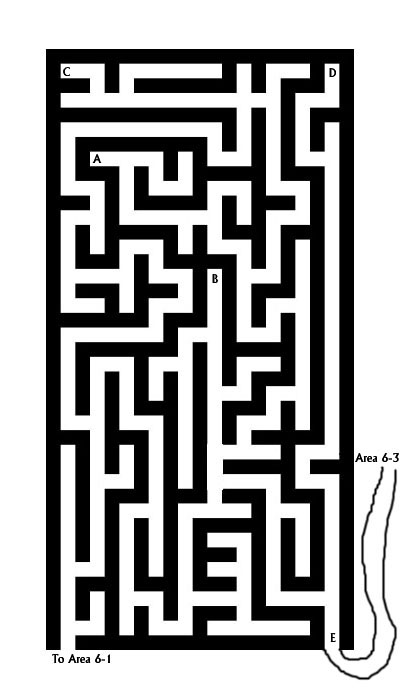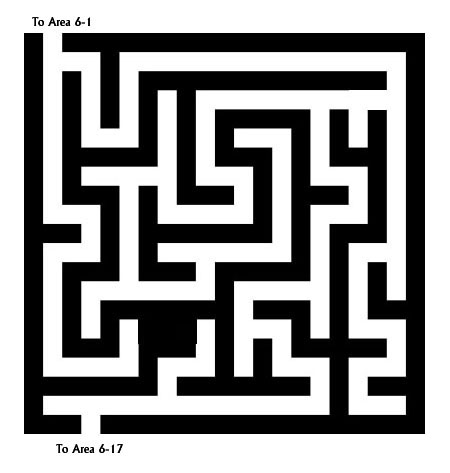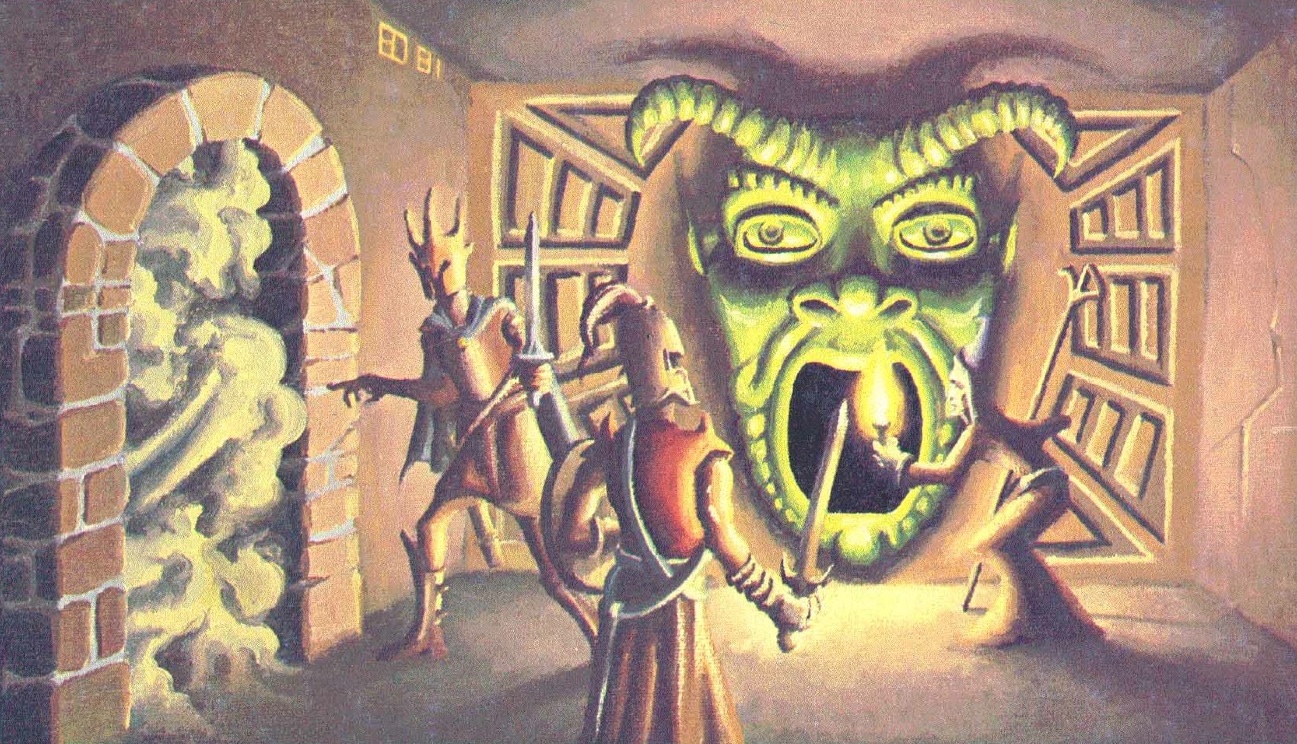Hey, the e-mail address through the Contact link works now. Apparently, if you spell Alexandrian without the “r”, the Internet will not magically read your mind and deliver your mail unerringly. Stupid Internet.
…..
Right. Shall we take a look at the second maze, then? I think we shall. (Thanks to Sarah for pointing out this egregious error.)
AREA 6-2B – DEATH FROM ABOVE

PHANTASMAL PIERCERS: This entire labyrinth is infested with phantasmal piercers. These vicious creatures are identical to normal piercers (ToH, pg. 214) except that they can become incorporeal at will. They lurk above the ceiling, where they can’t be detected, and then fall down upon their victims. If they miss, they turn incorporeal again and fall through the floor to avoid exposing their vulnerable underbellies.
In any given hallway (no matter how short), assume there are 1d10 piercers lurking above the ceiling (even if the PCs been down that hall before). Each piercer will attack a random PC. If the PCs stay in one place, they attract 1d10 piercers each minute.
POINT A (DEAD PALADIN): The body of a dead paladin lies here, although little remains beyond a moldering skeleton in rusted plate and a rotting tabard with the holy symbol of Athor. His sword, however, is gleaming and untarnished – a +2 holy longsword.
The paladin’s body is infested by a phycomid (ToH, pg. 214). Anyone drawing near will be sprayed with acid and spores.
POINT B (DEAD GOBLIN): The body of a goblin lies here. He’s been impaled by one of the phantasmal piercers, but apparently he managed to stab it with his dagger even as he was dying. The other piercers have instinctually avoided the dead body of their comrade.
This goblin was part of the goblin party now in area 6-16. When the mustard jelly attacked them in maze 6-2A, he fled north in a panic and somehow found his way through the maze. Unfortunately, he entered this maze and got himself killed.
In addition to his dagger, the goblin is wearing studded leather armor (ruined when the piercer impaled him). He carries a belt pouch with 2 gp, 15 sp, and 28 cp. He wears an eyepatch over his left eye.
POINT C (MIMIC): CR 6; Huge Aberration (Shapechanger); HD 15d8+75; 142 hp; Initiative +1; Spd 10 ft.; AC 16 (-2 size, +8 natural), touch 16, flat-footed 16; Base Attack +10, Grapple +18; Attack +19 melee (2d6+8, slam); Full Atk 2 slams; Space/Reach 10 ft./10 ft.; SA adhesive, crush; SQ darkvision 60 ft., immunity to acid, mimic shape; SV Fort +10, Ref +5, Will +9; Str 27, Dex 10, Con 21, Int 10, Wis 13, Cha 10.
Skills: Climb +21, Disguise +21, Listen +16, Spot +16
Feats: Alertness, Awesome Blow, Improved Bull Rush, Lightning Reflexes, Power Attack, Weapon Focus (slam)
AWESOME BLOW: The mimic’s Awesome Blow feat allows it to subtract 4 from its attack roll. If it hits, its opponent must make a Reflex save (DC = damage dealt) or be knocked back 10 feet, falling prone. Due to the mimic’s adhesive ability, the character will also find themselves automatically grappled and pinned
ADHESIVE: A character hit by the mimic is automatically grappled and cannot escape until the mimic is dead.
CRUSH: A mimic deals 2d6+8 points of damage with a successful grapple check. They deal this damage automatically as a free action to characters who are pinned by their awesome blow.
MIMIC SHAPE: Disguised as a large iron chest. Requires close examination, Spot vs. Disguise check, to penetrate the disguise. (By that point, it’s far too late.)
POINT D (THE SWORD AND SHIELD): Hanging on the wall at the end of this hallway there is a sword of mithril-edged adamantine and a large shield of silver. Anyone casting detect magic or identify will instantly recognize these items as being cursed: A -3 backbiting greatsword and a shield of clumsiness (-4 penalty to Dexterity and a 20% chance of spell failure).
Except they aren’t, as anyone using the items or casting analyze dweomer will quickly realize. The sword is actually a +3 ghost touch greatsword of adamantine (the mithril-edging has no mechanical effect). The shield is actually a +1 reflecting shield.













